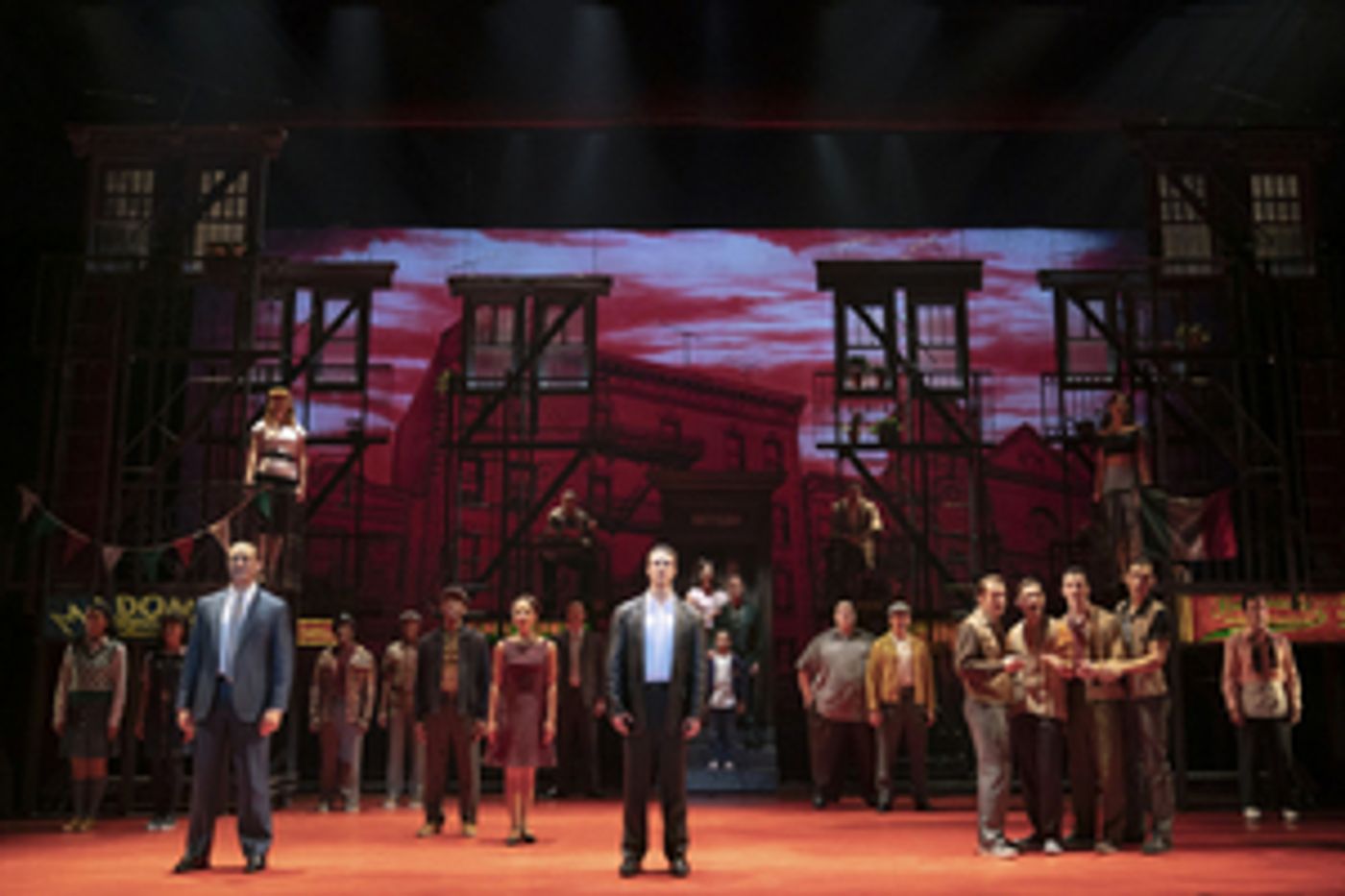Review: A BRONX TALE, A Quintessential 60s Musical

Every decade has a quintessential musical associated with it: Guys and Dolls for the 30s, Jersey Boys for the 50s. For the 1960's, A Bronx Tale is that musical.
Containing similar themes to its predecessors, A Bronx Tale differentiates itself as a bildungsroman to tell the story of Calogero, a young Italian-American growing up in the Bronx, New York, who finds himself grappling with the social and familiar pressures of his day.
With doo-wop melodies and some gambling on the side, A Bronx Tale is a story about life and loss, love and fear, and family and community. With so many themes converging into one show, the musical, along with the 1993 film and 1989 play of the same name, struggles to adequately address each theme - attaining breadth over depth.
Throughout a soft welcome to the neighborhood in the dance number "Belmont Avenue," Calogero (Alec Nevin) begins the narration of his story, looking back on his past as Young Calogero (Trey Murphy).
His Bronx tale begins when Young Calogero witnesses a murder on his street by the mafia boss Sonny (Jeff Brooks). Young Calogero cunningly deducts that if he lies to the cops about the murder, he will be able to get Sonny on his side, and indeed, Sonny takes to Young Calogero like a son. This is the catalyst that begins Calogero's coming-of-age journey.
As Calogero grows, he is confronted and conflicted with his family and friends. Calogero grows distant from his father, Lorenzo (Nick Fradiani). Calogero's admiration and constant association with Sonny agitate this already strained father-son relationship and lead to pivotal moments in the show.
Calogero sees the life Sonny has and relishes being on top, but his father tries to steer Calogero in a different direction - a workingman's life, an honest direction.
In addition to family conflict, the proud Italian neighborhood clashes with the African neighborhood in the show. Spurred on by growing racial tensions and divides in the country at that time, the two groups nip at each other's necks, only to be more complicated when Calogero falls in love with Jane, an African-American woman.
With a score by Alan Menken, the mafia life has never seemed so upbeat and lively. Though the music may not have captured the essence of life in 1960's Bronx, New York, the musicality in certain numbers is so well composed that you forget what time period you're even in.
Mr. Nevin doesn't help with that, either; his voice and acting skills transcend decades, and he is a joy to watch grow from an immature know-it-all into a respectable young man.
Mr. Murphy does a standout job as Young Calogero, as well. His innocence and youth add an integral layer to his character, whose backstory narration alone would not do justice. "The saddest thing in life is wasted talent," his father tells him, and young Mr. Murphy is certainly using his talent.
As for the sets, a single streetlamp with a changing street sign is well used to change the setting with a change of the street name. Fire escape scaffolding flanks the stage during street scenes (think West Side Story mixed with In the Heights). Although the physical set pieces added depth to the show, the backdrops used were both boring and detractive. Additional sets could have enhanced the neighborhood and given the audience a greater understanding of what the streets of the Bronx were.
For Sonny, his streets were safe for those who were on his good side but deadly for those who were not. Calogero eventually learns that having a life like Sonny means always having to look over your shoulder on the streets. It would take a tragedy before Calogero realizes what both of his father figures, Sonny and his dad Lorenzo, were trying to tell him from the beginning.
When the dust settles and Calogero completes his journey from childhood to adulthood, he is able to see his life and his choices with a new maturity. It is the completion of his coming-of-age tale, but as crazy as his autobiographical story may seem, Calogero reminds us that, "this is just another Bronx tale."
To see or not to see score: 6/9; Moderately Recommended Show
Photo by: Joan Marcus
Reader Reviews
Videos

